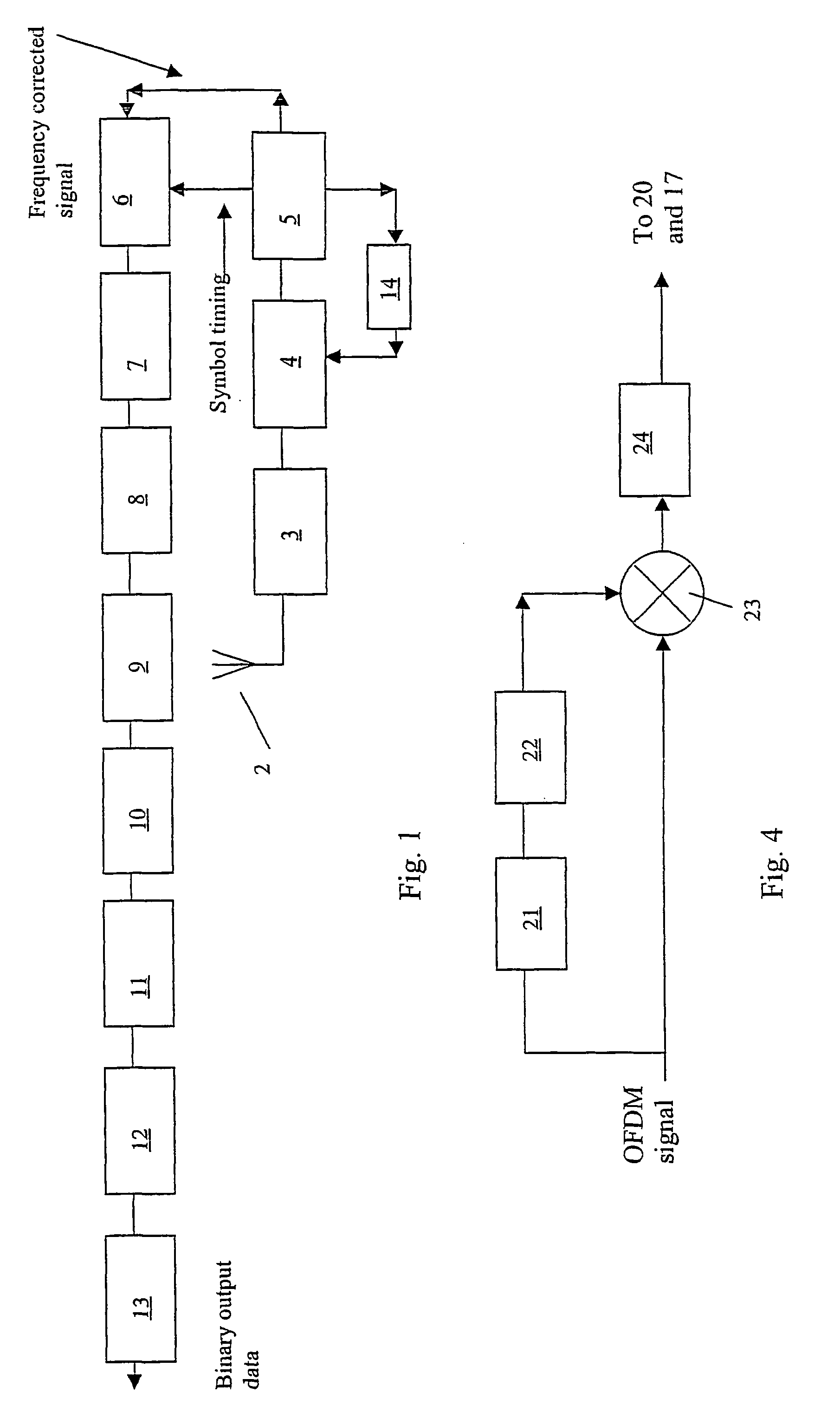Methods and apparatus for synchronization of training sequences
a training sequence and synchronization technology, applied in electrical equipment, digital transmission, transmission noise suppression, etc., can solve the problems of multiple signals being delayed with respect, synchronization can become more difficult, so as to increase the accuracy of synchronization
- Summary
- Abstract
- Description
- Claims
- Application Information
AI Technical Summary
Benefits of technology
Problems solved by technology
Method used
Image
Examples
first embodiment
[0054] In the present invention, a first rough carrier frequency offset (CFO) is obtained by the frequency offset estimation unit 17 using an output of the autocorrelation unit 16. A first rough symbol timing is obtained by a synchronisation machine 20 using an output from the autocorrelation unit 16. At least the phase output (optionally the amplitude output as well) of the autocorrelation unit 16 is supplied to the frequency offset unit 17. The amplitude signal and / or the phase output from the autocorrelation unit 16 is supplied to the synchronisation machine 20. The CFO estimation unit 17 and the synchronisation machine 20 may both be parts of a processing engine based on a microprocessor.
[0055] The autocorrelation unit 16 can be adapted to use one or more types of sliding autocorrelation. The principle of a sliding autocorrelation is shown schematically in FIG. 10a for a part of the STS of the preamble of FIG. 2b. Autocorrelation relates to correlation of a first set of samples ...
second embodiment
[0059] In accordance with a second embodiment a more accurate estimate of the CFO is obtained from the LTS. The LTS part of the preamble of FIGS. 2a, b, c contains 2 specific OFDM symbols (C) of normal length (64 samples, hence called ‘long training symbols’ LTS), preceded by a cyclic prefix of the symbols copying the last 32 samples of the C symbols. For autocorrelation of the LTS's of FIGS. 2a-c, a correlation over 32 or more samples of the LTS is preferred. This requires that the autocorrelator unit 16 and the carrier offset estimation unit 17 need to be reconfigured when changing from 16 sample autocorrelation of the STS to 32 sample correlation of the LTS. CFO impacts the phase output from autocorrelation of the STS and the LTS in a similar way. FIGS. 13a and b show the amplitude and phase output of the autocorrelator unit for 32 samples for the LTS of FIG. 2b. The arrow in FIG. 13 shows clearly how CFO shifts the phase from 0 (ideal case with no CFO) to a value dependent upon ...
PUM
 Login to View More
Login to View More Abstract
Description
Claims
Application Information
 Login to View More
Login to View More - R&D
- Intellectual Property
- Life Sciences
- Materials
- Tech Scout
- Unparalleled Data Quality
- Higher Quality Content
- 60% Fewer Hallucinations
Browse by: Latest US Patents, China's latest patents, Technical Efficacy Thesaurus, Application Domain, Technology Topic, Popular Technical Reports.
© 2025 PatSnap. All rights reserved.Legal|Privacy policy|Modern Slavery Act Transparency Statement|Sitemap|About US| Contact US: help@patsnap.com



